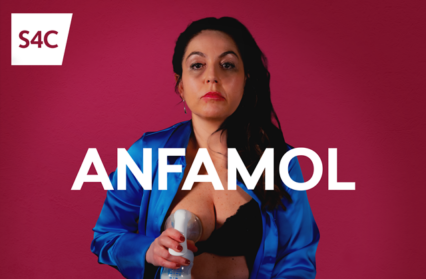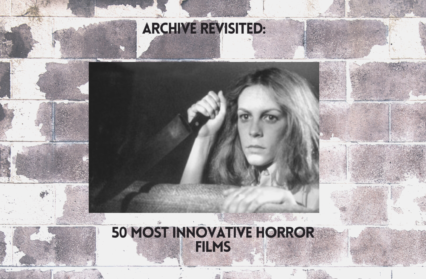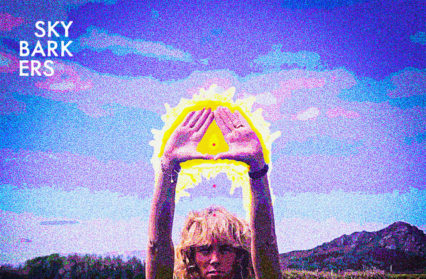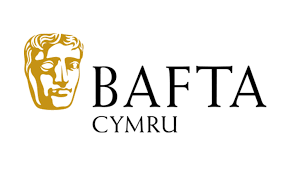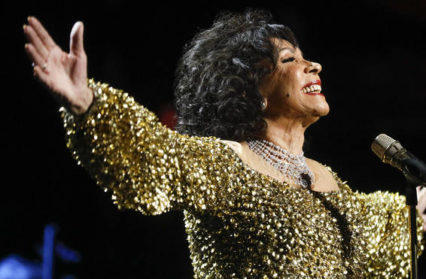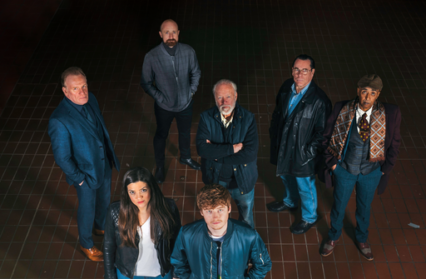Gary Raymond reflects on the first of two episodes that focus on Wales in the third season of Netflix’s The Crown in Aberfan.
The first thing that The Crown gets right in its episode about the Aberfan disaster is the otherworldliness of the world of mining. Some have a tendency to look back on the industry with rose-tinted glasses. Indeed there is much to be nostalgic about; meaningful employment, belief in education, a working community. But the pre-credit sequence of the third episode of the third season of Netflix’s surprise megahit series about the royal family during the time of Elizabeth II, takes the viewer to a place that keenly bisects the common understanding of just what it was like to live in those communities. The town of Aberfan was not attached to the mine, it was not fulfilled by the mine, it was utterly dominated by it. The smell, the sound, the light, was all in thrall to the workings of that pit. The makers of The Crown, and in particular director Benjamin Caron, understand the reality of life in a town like Aberfan; every window looking out onto, every street pointing up to the works and its filthy produce. As the inspectors ride their jeep up to the peek of tip seven they push through a landscape reminiscent of Krakatoa, and what they see at the summit is bordering on the dystopic. Great wires move unmanned buckets through a misted sky, the air is filled with the intermittent echoing thuds of machinery. This is mining in the way that Zola wrote about it in Germinal, and when the sink hole expands in the floor of tip seven, one cannot help but be reminded of his description of the mines in northern France of the late nineteenth century, a beast with gaping mouth swallowing men all day long into the fires of the Earth. Zola, like The Crown, was concerned both with the human tragedy of the industry, but also with the political tragedy of it, that the lives of working class people have always been expendable when it comes to the feeding of the capitalist monster.
And this is why The Crown has got its depiction of the Aberfan disaster so right. It is artful as much as it is gut-wrenching, and although it is respectful, it is neither nostalgic nor is it afraid to stretch history in order to make a wider point. It is literate, bold, and believes first and foremost in its message, a message that goes far beyond those poor people of Aberfan, but a message for which they are a symbol. The fifty five minutes of drama that make up this Aberfan episode is quite simply the best thing that has been done on the subject.
It is likely some of the success of the episode evolves from the fact that it comes from a place of distance. The subject is still treated in Wales with understandable tenderness, and it is perhaps still too raw to get into it with the dramatist’s scalpel. (Although Neil Docking’s stage play The Revlon Girl is an excellent exploration of grief in the aftermath – and it’s interesting to see both Michelle McTernan and Charlotte Gray from that cast taking roles as mothers here). The Crown is not about Aberfan, and so it comes with the respectful gaze of people with a job to do. The Crown finds in the disaster perhaps its most potent symbol yet of the series’ true preoccupation: the British class system. The Aberfan disaster, then, is not a “Welsh” disaster (although the programme makers treat the country and its people with the utmost respect in this and later episodes), but it is a “working class” disaster, and it is impossible to watch without Grenfell coming to mind. The programme is most interested in the outdated attitudes of the establishment classes of the day, both monarchic and political; how ill-prepared they were in reacting to the very real plights of its subjects. And so there Aberfan also stands for every other exploited community in Britain. The episode is extremely critical of the Queen, there are no two ways about it, but it is sympathetic to a monarchy that had not moved with the times, and not understood the age of deferential subjects had been disintegrating since the Great War.
Director Caron makes some brave choices, and they all come off. When Harold Wilson visits the town, the treatment of the moment when those digging for survivors stop to listen for the cries of the buried is framed in hyper-real theatrical lighting, the searchers cast in amber silhouette, like a monument to the heroes. When Wilson takes questions at a press conference, the anger and desperation of the community comes out of the darkness as disembodied voices, the expressions for the dead of Aberfan, but also for all the people of history and the history yet-to-be-written that have died and will do at the hands of capitalist exploitation.
The performances are exemplary. Olivia Coleman’s Queen disassembles before our eyes; Jason Wilkins’ Wilson portrays a sharp political thinker, but also a man of inescapable compassion; Tobias Menzies as the Duke of Edinburgh shows all the complexities that give so many of the episodes of this season their depth. But the real star is Caron and writer/show creator Peter Morgan, who has managed in just under an hour to create something that is a fitting tribute to the tragedy, but also is a smart and cutting dissection of the political environment that made it happen. Morgan sees in history the repetition of evil and the prejudices that insulate it. That’s why we have Aberfan and Grenfell and countless examples across the world in between those two tragedies.
The Crown is available now on Netflix.
You might also like…
Gary Raymond takes a look at the hit Netflix series back for its fourth season, as The Crown heads into the eighties and introduces Margaret Thatcher and Princess Diana into the fray.


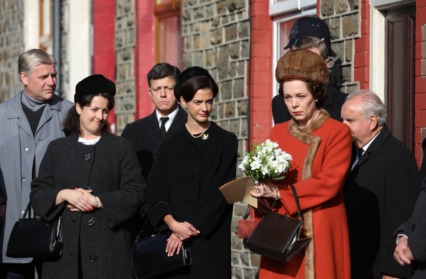
 Enjoyed this article? Support our writers directly by buying them a coffee and clicking this link.
Enjoyed this article? Support our writers directly by buying them a coffee and clicking this link.

